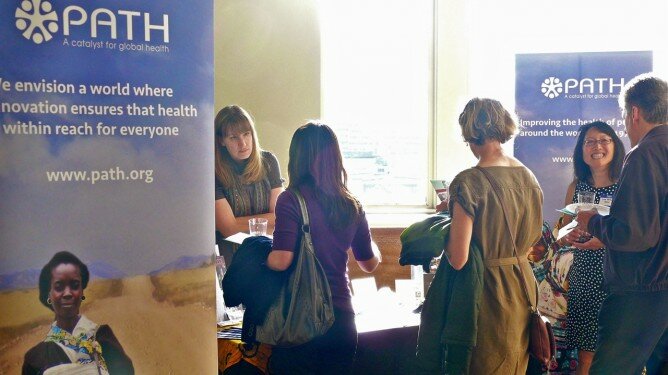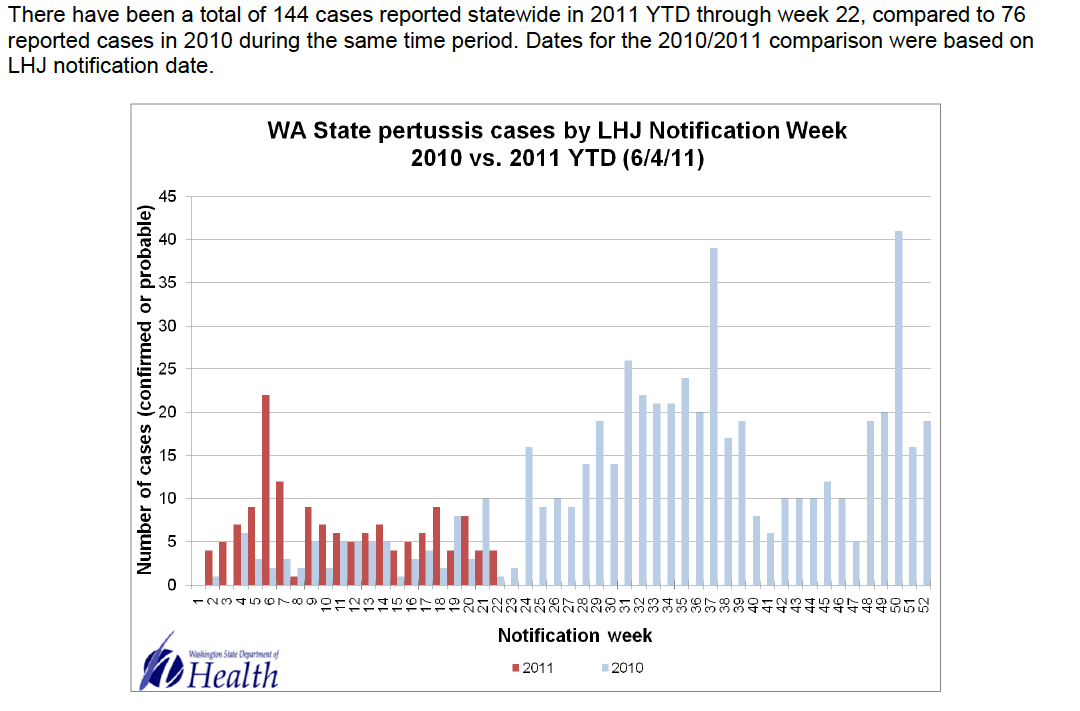
When Seattle starts to feel a little too provincial to you, the World Affairs Council delivers on its promise to “link Greater Seattle to the world.” Since 1951, the non-profit has been presenting events that interrupt our cloud-enshrouded navel-gazing, through the help of visiting world leaders and visionaries. (If you’re in your 20s to 30s, by the way, membership is just $40.)
Following this week’s panel “Vaccines: The Global Health Miracle,” Rep. Jim McDermott (D-WA) moderates a talk on June 28, 2011, with Mr. Festus Gontebanye Mogae, former President of Botswana and Chairman of the Champions for an HIV-Free Generation, on how African leaders are leading the fight against HIV/AIDS.
For the vaccine panel, WAC timed their talk to take advantage of the Pacific Health Summit (which is focusing on vaccines this year, besides kicking Tom Paulson around–follow Paulson’s coverage of the “Davos of global health” at Humanosphere). So, on the stage were assembled GAVI Alliance’s Helen Evans and Aga Khan University Medical Center’s Dr. Zulfiqar Bhutta, along with local lights PATH’s Dr. Chris Elias, Seattle & King County Public Health’s Dr. David Fleming, and Seattle BioMed’s Dr. Alan Aderem.
It was Aderem who said, bluntly, that “the problem is that all the easy vaccines have been made,” where easy is largely defined as instances where there’s a successful and remembered immune response to the disease. With HIV/AIDS, tuberculosis, and malaria, noted Aderem, you can’t simply expose someone to a weakened form of the virus and have them develop sustained resistance.
You may be startled to learn, as I was, that some 30 percent of the world’s population are infected with latent tuberculosis–it’s not infectious in this state, but if their immune system is compromised by another disease, TB can become active. The evening’s commentary was studded with statistics like that. Aderem again: “Every 30 seconds a child in Africa dies of malaria.” Because time is generally of the essence, Aderem is a proponent of using systems biology to “develop predictive models of the immune and inflammatory responses.”
In some ways, the “easiness” of early vaccines has worked against us, because scientists didn’t have to know precisely what the interactions were in the immune system that made them work. They just did–and using that pragmatic model, vaccines could be produced. Now, it is necessary to understand exactly what the immune system can and can’t do, to understand its failures–and to understand if a vaccine will fail before taking years and millions of dollars to run it through trials.
This history has also led us to our current epidemic of vaccine denialism–and by “our” I mean “our”: the anarcho-syndicalists of Vashon Island make the New York Times occasionally for 18 percent opt-out rates in vaccination, despite, ironically, Vashon also being the home of Bill Foege, the man who out-strategized smallpox. (The topic provokes reliably lively conversation in the local paper.) As I’ve written earlier, Washington State leads the nation in voluntarily unvaccinated children.
The problem with great successes in vaccines is that if they work amazingly well, you create a generation of people who have no familiarity with what they’re being vaccinated against. (Conversely, what people notice is the rate of adverse reactions to vaccinations, mild and severe, which if relatively rare are not medically understood in a way that promotes confidence among parents with sick children.) Or, if you’ve set a benchmark of performance that people expect from vaccines, anything below that (due to the evolution of a virus over time) strikes people as ineffective.
David Fleming, though, advanced another theory about King County’s vaccination rates: children’s immunization is 80 percent and stagnant, HPV vaccination for teen girls is around 30 percent, pneumonia vaccination for senior citizens is 66 percent, the overall influenza vaccination rate is something less than 50 percent. In his view, it’s more a combination of the complacency conferred by herd immunity, the complexity of the immunization course, and the hectic nature of modern life. Opt-out rates, he believes, are to some extent a measure of how stressed parents are. He’d like to make the process less of a harried-parent chore and see what that does.
For GAVI’s Evans, these might be what’s known as “first-world problems.” The GAVI Alliance is working on vaccinations for preventable diseases, on scales that would beggar the imagination if they weren’t preceded by the numbers of deaths. (PATH’s Elias illustrated the difference in scale: the U.S. sees about 40 deaths per year from the rotavirus, while globally some 500,000 people die.) “At least you had the choice,” she told the Seattle audience, if any of them had opted against vaccination. The organization’s mission is to provide global equity in access to vaccinations, working with funders, co-financing countries, and pharmaceutical companies to get affordable vaccines distributed widely. In the last ten years, 280 million children have been immunized, Evans reported, and they plan to add another 250 million to that by 2015 (thanks in part to a billion-dollar gift from the Bill & Melinda Gates Foundation).
Zulfiqar Bhutta could speak to the choice-free perspective as well, having had mumps as a child, a severe case which left him unable to walk for three or four days. He spoke eloquently about the hundreds of thousands of children who die in Pakistan each year from preventable disease (where the average per capita income is about $480 per year), and about the advantages of public health infrastructure that can effect changes at scale, so relatively quickly. For Bhutta, the challenge of vaccines is not adverse events, but the ability to store them at cold enough temperatures so that they can be transported across the country.
If all the easy vaccines have been made, that’s clearly not all there is to the story. As Bhutta noted, all the easy ways to deliver vaccines are being used, too. PATH is working hard on “hardening” testing and delivery equipment for use in remote areas; Aderem gave the example of nanotechnology being used to create mini-field labs that will do blood tests, then provide the data in cell-phone transmittable format, so that real lab analysis can be done, real-time.
And now, an extensive slideshow from the event, courtesy of photographer Alan Alabastro:
World Affairs Council: Vaccines – The Global Health Miracle – Images by Alan Alabastro

